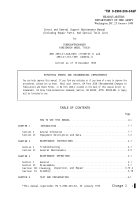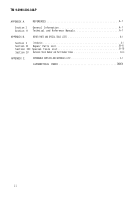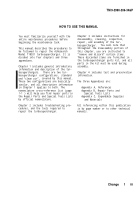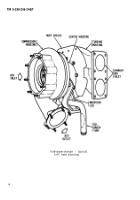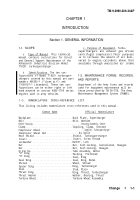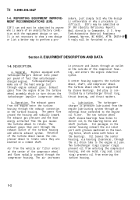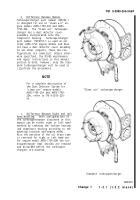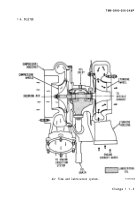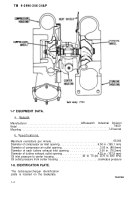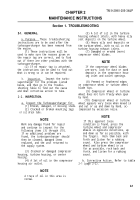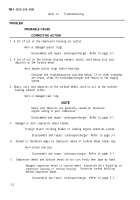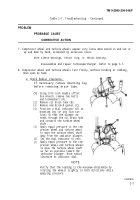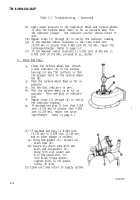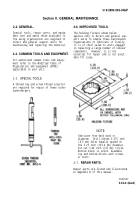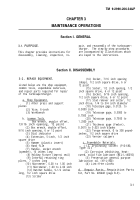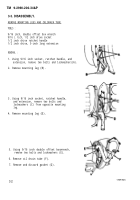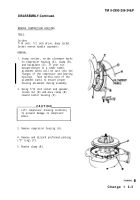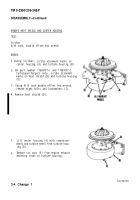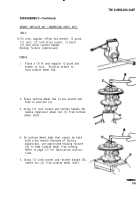TM-9-2990-206-34P - Page 17 of 85
CHAPTER 2
TM 9-2990-206-34&P
MAINTENANCE INSTRUCTIONS
Section 1. TROUBLESHOOTING
2-1. GENERAL.
a. Purpose.
These troubleshooting
instructions are to be used after the
turbosupercharger has been removed from
the engine.
(1) These instructions will be
used to make sure the reasons given on
the repair tag are correct, and to find
out if there are other problems with the
turbosupercharger.
(2) If no repair tag is attached,
the instructions can be used to find out
what is wrong so it can be repaired.
b.
Inspection. Inspect the turbo-
supercharger for the problems listed
below, and then go to the Trouble-
shooting Table to find out the cause
and what corrective action to take.
2-2.
INSPECTION.
(5) A lot of oil in the turbine
housing exhaust inlets, with heavy oily
soot deposits on the turbine wheel.
(6) Heavy oily soot deposits on
the turbine wheel, with no oil in the
turbine housing exhaust inlets.
(7) Damaged or eroded (worn)
compressor wheel blades.
NOTE
If the compressor wheel blades
are worn, look for dust or sand
deposits in the compressor hous-
ing inlet and outlet openings.
(8) Peened or feathered edges
on compressor wheel or turbine wheel
blade tips.
(9) Compressor wheel or turbine
wheel does not turn freely when spun
by hand.
(10) Compressor wheel or turbine
wheel appears very loose when moved in
a. Inspect the Turbosupercharger for:
(1] Broken, damaged, or missing studs. and out or up and down by hand, ac-
(2) Cracked or broken mounting legs
or oil drain tube.
NOTE
Mark any damage found for repair
and continue to inspect for the
following items (3) through (10).
If no additional problems are
found, the turbosupercharger should
then be cleaned, damaged items
replaced, and the unit returned to
the supply system.
(3) Cracked or damaged compressor
housing, turbine housing, or center
housing.
(4) A lot of oil in the compressor
housing air outlet.
NOTE
A trace of oil in this area is
normal.
companied by excessive noise.
NOTE
If this apparent loose
condition is found, press the
turbine wheel and compressor
wheels in opposite directions, up
and down as far as possible, with
the fingers. Rock them back and
forth and listen for a rubbing
sound. Also press the compressor
wheel and turbine wheel in as
far as possible, rock back and
forth, and listen for a rubbing
sound.
b. Corrective Action. Refer to table
2-1 (page 2-2).
2-1
Back to Top

